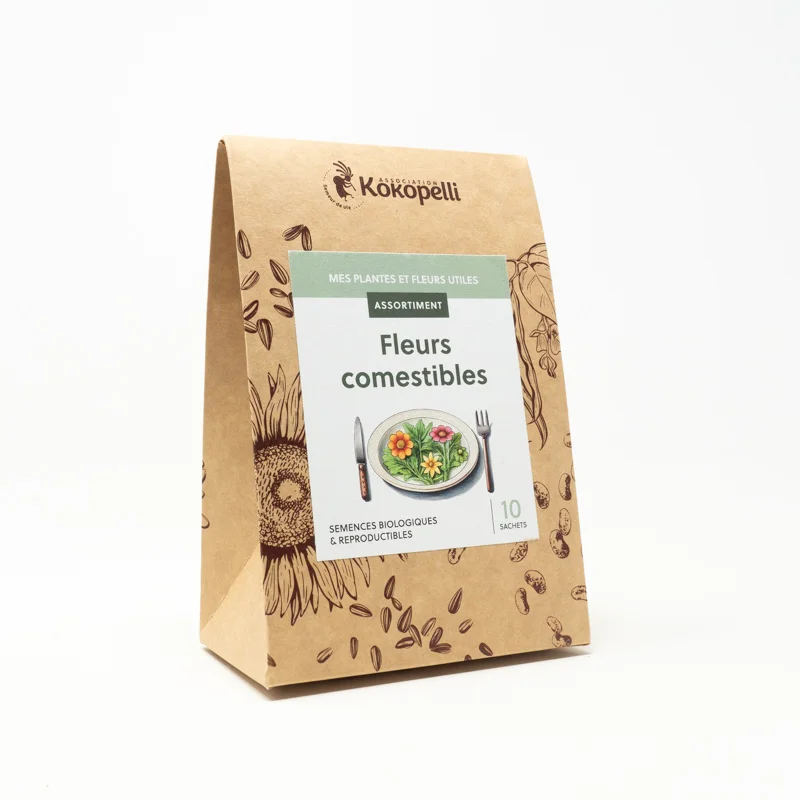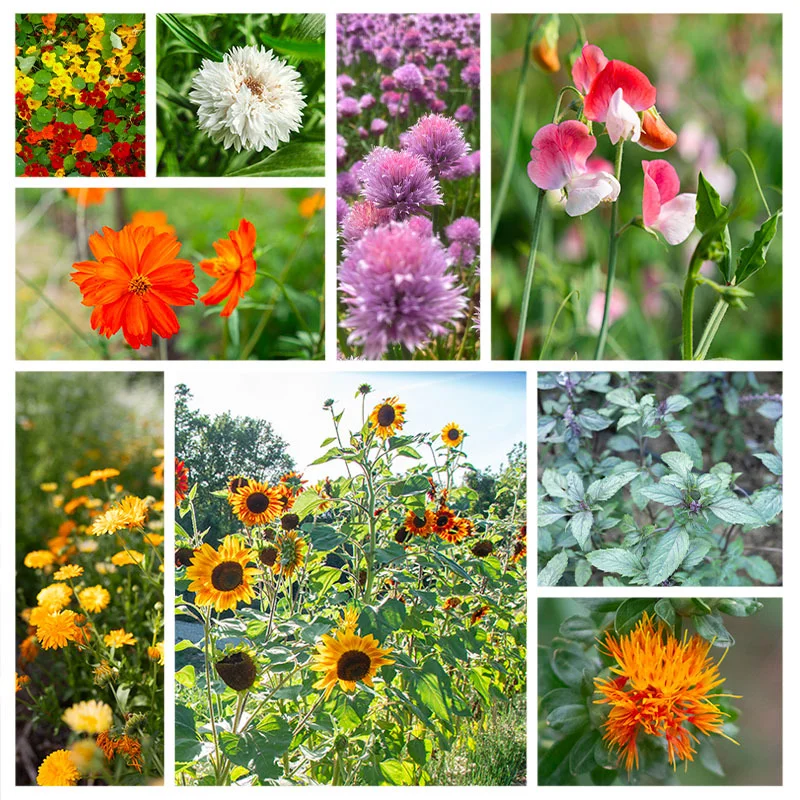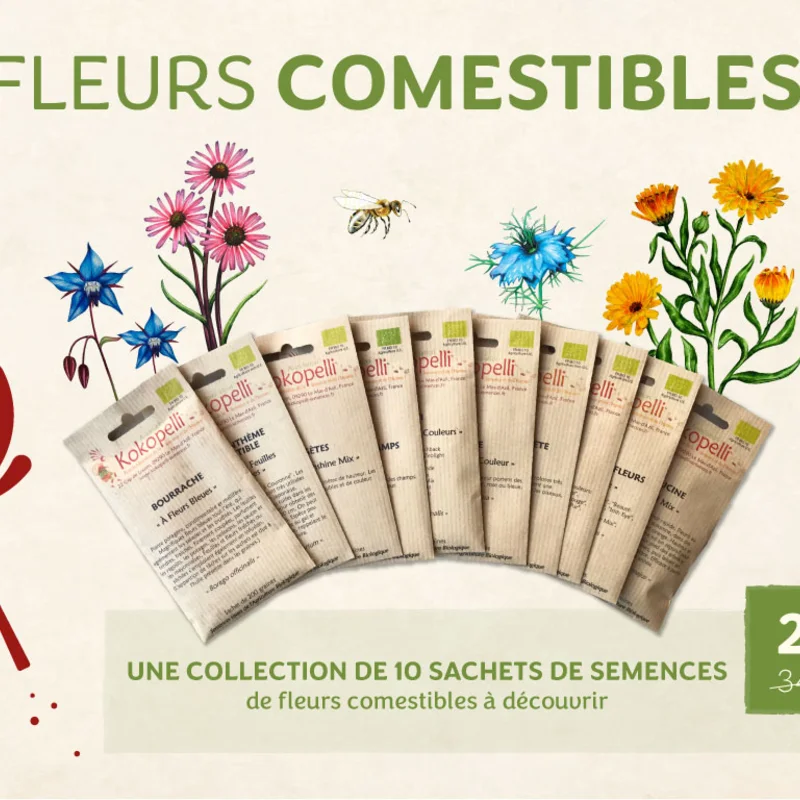Assortment - Edible flowers
A collection of 8 bags of edible flower seeds:
The edible flower varieties in this assortment can be sown from February to June and harvested from June to November. A calendar on the back of the sachets indicates the sowing and harvesting periods for each species.
This variety, with its hairy stems and foliage, produces an abundance of white flowers. The fresh leaves can be eaten raw or cooked as a condiment. Dried leaves and flowers are used in infusions.
Stains on the sachets are due to the oil contained in the seeds.
This annual messicolous variety produces cut foliage and an abundance of decorative, edible and medicinal white flowers.
Blueberries are a favorite with butterflies and bees.
This species is one of the 50 most essential plants in traditional Chinese pharmacopoeia. It produces fine, silvery foliage and upright stems bearing mauve flowers, which are highly attractive to honeybees.
It is used to treat diarrhea, gastric problems, nausea, vomiting, fevers and colds.
This ancient variety produces a thick, straight stem up to 4 m high, bearing a single golden flower about 55 cm in diameter. Its seeds are edible.
Sunflower seeds are very popular with birds.
From spring to autumn, this variety offers a mixture of orange and yellow flowers, single or double, which are melliferous, tinctorial and have many medicinal virtues.
Marigold is also known as Calendula. And the origin of this name comes from the fact that it blooms all year round, during the calendas (1st day of the month in Roman times) of each month.
This variety with its cut foliage produces an abundance of luminous yellow and orange flowers right up to the frosts. The flowers, left to dry on the ground in autumn, provide seeds that are much appreciated by birds.
This species is very popular with birds. The flowers can be left to dry in autumn to feed on the seeds.
This variety offers a mix of single and double flowers in a wide range of patterns and colors: yellow, orange, purple and variegated. A magnificent variety to experiment with in the garden.
The scent given off by the leaves repels certain insect pests such as aphids and attracts more useful ones such as butterflies and hoverflies. As for the root, it secretes a substance that is thought to inhibit nematodes and whiteflies.
This variety has very finely cut, collared green foliage. It has an abundance of blue, pink, mauve or white flowers.
The seeds are used for their nutritional and medicinal properties.












